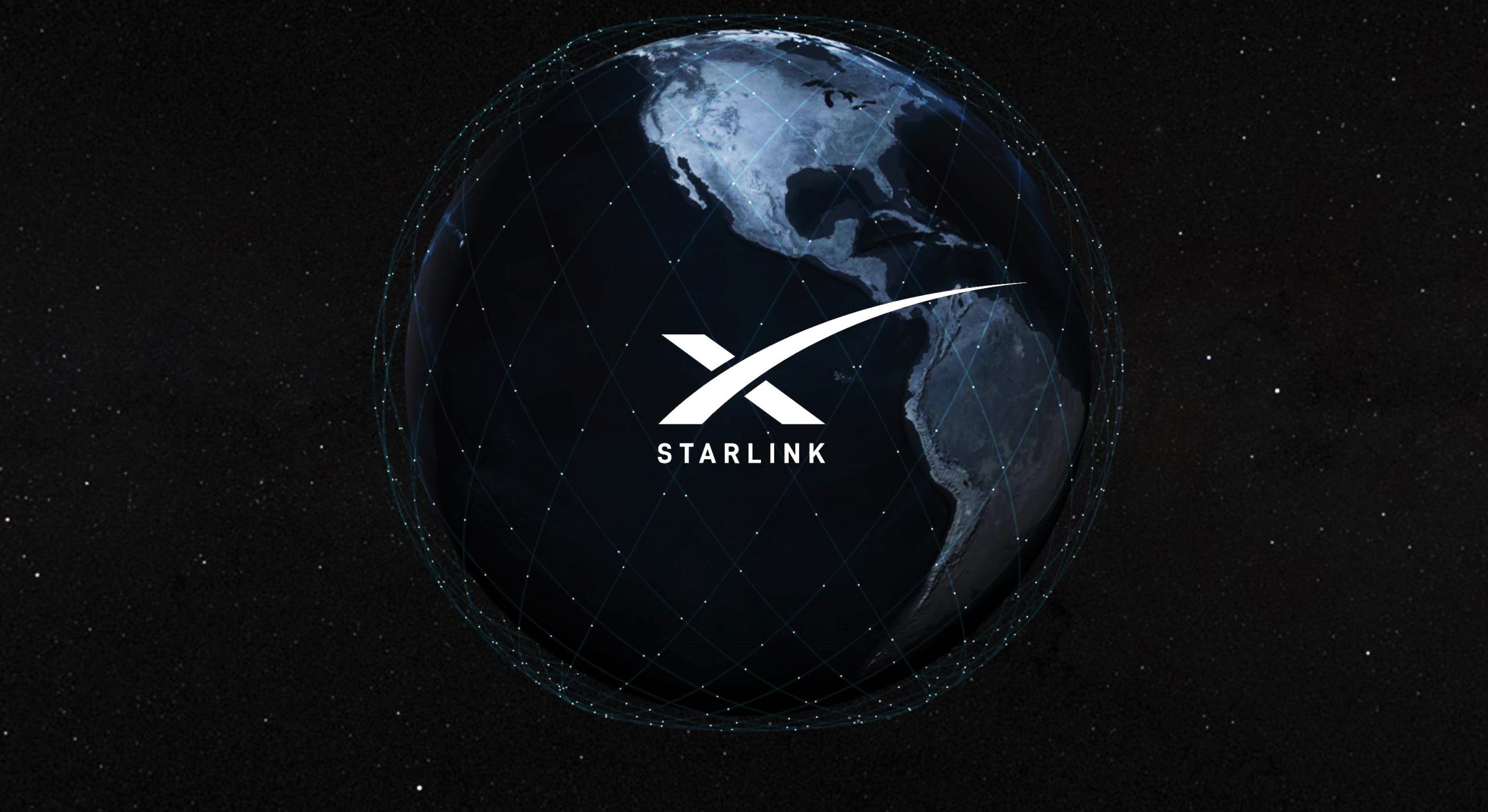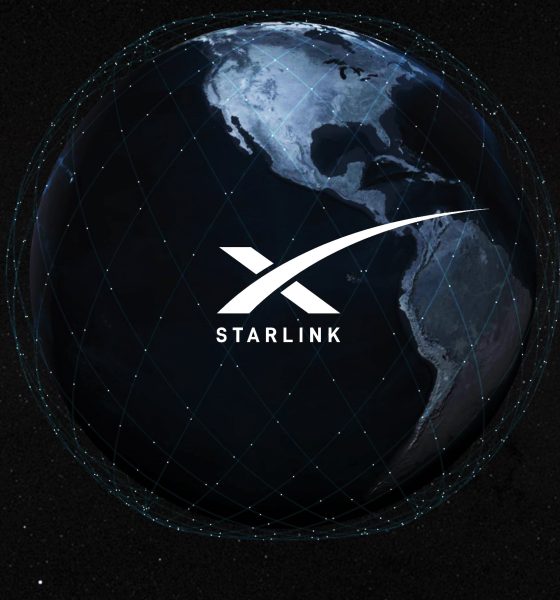

News
SpaceX CEO Elon Musk hints at Starlink’s global reach at Tesla shareholder event
Speaking at Tesla’s annual shareholder meeting, CEO Elon Musk – also CEO of SpaceX – briefly segued to his spaceflight company’s ambitious Starlink program and discussed how he believes the satellite constellation can support no more than 3-5% of the global population.
On May 23rd, SpaceX successfully launched 60 “v0.9” Starlink satellites – weighing as much as 18.5 tons (~41,000 lb) – into LEO, a first step unmatched in ambition in the history of commercial satellites. Delivered to an orbit of ~450 km (280 mi), all but four of the 60 spacecraft have managed to successfully power up their electric ion thrusters and 55 have already raised their orbits to ~500 km (310 mi). For what is effectively a technology/partial-prototype demonstration mission, the record of Starlink v0.9 performance is extremely impressive and bodes well for a quick and relatively easy design optimization (to “v1.0”) before true mass production can begin.
In general, Musk was more than willing to acknowledge some of the potential limitations of a Low Earth Orbit (LEO) broadband satellite constellation at Tesla’s 2019 shareholder meeting. Most notably, he bluntly noted that Starlink is not designed to service densely populated areas and will predominately be focused on low to medium-density populaces. Triggered by an investor’s question about the possibility of integrating Starlink into future Tesla cars, Musk reiterated that SpaceX’s first-generation Starlink user terminals (i.e. ground antennas) will be roughly the size of a “medium pizza”.
Although pizza sizing is not exactly ISO-certified, Starlink’s user antennas will presumably be around 12-14 inches (30-36 cm) wide and come in a square form factor. Thanks to the use of what Musk believes are the most advanced phased array antennas in the world, neither the antennas on Starlink satellites or user terminals will need to physically move to maintain a strong signal. Still, as Musk notes, an antenna the size of medium pizza box would still stick out like a sore thumb on the typically all-glass roof of an of Tesla’s consumer cars, although built-in Starlink antennas might actually make sense on Tesla Semis.
Elon Musk’s specific comment indicated that Starlink – at least in its current iteration – was never meant to serve more than “3-5%” of Earth (population: ~7.8 billion), with most or all of its users nominally located in areas with low to medium population densities. This generally confirms technical suspicions that Starlink (and other constellations like OneWeb and Telesat) is not really capable of providing internet to everyone per se.
For SpaceX, each Starlink satellite – per official statements that the first 60 satellites represent more than 1 terabit of bandwidth – likely offers bandwidth of roughly 17-20 gigabits per second. In simpler terms, this means that one Starlink satellite overhead could theoretically support as many as 4000 users simultaneously streaming YouTube videos at 1080p/30fps, a figure that sounds impressive but glosses over the sheer number of people that live in cities. Importantly, every single Starlink satellite at ~550 km will likely have a service radius of several thousand – if not tens of thousands of – square kilometers.

Even though the US is exceptionally large and spread out relative to most other countries, a single square kilometer of New York City, Los Angeles, San Francisco, Boston, Miami, Seattle, or dozens of other cities could effortlessly saturate a Starlink satellite’s bandwidth. Even the smallest of towns and cities could easily use most or all of ~20 Gbps at peak hours. In short, Starlink is going to be extremely bandwidth-constrained. Even if SpaceX can double or triple each satellite’s bandwidth and have 10-100 satellites overhead and capable of delivering internet at any given moment, it’s hard to imagine that Starlink will ever be able to serve every person that falls under its coverage area.
Additionally, this means that there is a strong chance that Starlink internet customers will be subject to relatively strict bandwidth limitations and throttling at peak hours. Thankfully, these limitations will be made entirely out of technical necessity, standing in stark contrast to the arbitrary, greed-motivated carriers and ISPs Americans are almost universally accustomed to. In an absolute worst-case scenario, Starlink’s already-connected US customers would get roughly the same quality of service they are used to at roughly the same price. However, they would be able to rest assured that their money was going to SpaceX instead of filling the pockets of the robber-baron-esque shareholders and executives that run American ISPs.

Ultimately, the estimates provided above are exceptionally conservative and generally assume worst-case scenarios. SpaceX could very well beat expectations and develop unique and innovative ways of efficiently using its available bandwidth, while also tirelessly working to improve its technology and expand the carrying capacity of newer satellites. In general, CEO Elon Musk’s comments serve as an excellent temper to the hype surrounding Starlink. SpaceX isn’t going to initially be breaking the backs of Comcast or Time Warner but there’s no reason to believe that that day will never come.
Check out Teslarati’s Marketplace! We offer Tesla accessories, including for the Tesla Cybertruck and Tesla Model 3.

Elon Musk
Delaware Supreme Court reinstates Elon Musk’s 2018 Tesla CEO pay package
The unanimous decision criticized the prior total rescission as “improper and inequitable,” arguing that it left Musk uncompensated for six years of transformative leadership at Tesla.

The Delaware Supreme Court has overturned a lower court ruling, reinstating Elon Musk’s 2018 compensation package originally valued at $56 billion but now worth approximately $139 billion due to Tesla’s soaring stock price.
The unanimous decision criticized the prior total rescission as “improper and inequitable,” arguing that it left Musk uncompensated for six years of transformative leadership at Tesla. Musk quickly celebrated the outcome on X, stating that he felt “vindicated.” He also shared his gratitude to TSLA shareholders.
Delaware Supreme Court makes a decision
In a 49-page ruling Friday, the Delaware Supreme Court reversed Chancellor Kathaleen McCormick’s 2024 decision that voided the 2018 package over alleged board conflicts and inadequate shareholder disclosures. The high court acknowledged varying views on liability but agreed rescission was excessive, stating it “leaves Musk uncompensated for his time and efforts over a period of six years.”
The 2018 plan granted Musk options on about 304 million shares upon hitting aggressive milestones, all of which were achieved ahead of time. Shareholders overwhelmingly approved it initially in 2018 and ratified it once again in 2024 after the Delaware lower court struck it down. The case against Musk’s 2018 pay package was filed by plaintiff Richard Tornetta, who held just nine shares when the compensation plan was approved.
A hard-fought victory
As noted in a Reuters report, Tesla’s win avoids a potential $26 billion earnings hit from replacing the award at current prices. Tesla, now Texas-incorporated, had hedged with interim plans, including a November 2025 shareholder-approved package potentially worth $878 billion tied to Robotaxi and Optimus goals and other extremely aggressive operational milestones.
The saga surrounding Elon Musk’s 2018 pay package ultimately damaged Delaware’s corporate appeal, prompting a number of high-profile firms, such as Dropbox, Roblox, Trade Desk, and Coinbase, to follow Tesla’s exodus out of the state. What added more fuel to the issue was the fact that Tornetta’s legal team, following the lower court’s 2024 decision, demanded a fee request of more than $5.1 billion worth of TSLA stock, which was equal to an hourly rate of over $200,000.
Delaware Supreme Court Elon Musk 2018 Pay Package by Simon Alvarez
News
Tesla Cybercab tests are going on overdrive with production-ready units
Tesla is ramping its real-world tests of the Cybercab, with multiple sightings of the vehicle being reported across social media this week.

Tesla is ramping its real-world tests of the Cybercab, with multiple sightings of the autonomous two-seater being reported across social media this week. Based on videos of the vehicle that have been shared online, it appears that Cybercab tests are underway across multiple states.
Recent Cybercab sightings
Reports of Cybercab tests have ramped this week, with a vehicle that looked like a production-ready prototype being spotted at Apple’s Visitor Center in California. The vehicle in this sighting was interesting as it was equipped with a steering wheel. The vehicle also featured some changes to the design of its brake lights.
The Cybercab was also filmed testing at the Fremont factory’s test track, which also seemed to involve a vehicle that looked production-ready. This also seemed to be the case for a Cybercab that was spotted in Austin, Texas, which happened to be undergoing real-world tests. Overall, these sightings suggest that Cybercab testing is fully underway, and the vehicle is really moving towards production.
Production design all but finalized?
Recently, a near-production-ready Cybercab was showcased at Tesla’s Santana Row showroom in San Jose. The vehicle was equipped with frameless windows, dual windshield wipers, powered butterfly door struts, an extended front splitter, an updated lightbar, new wheel covers, and a license plate bracket. Interior updates include redesigned dash/door panels, refined seats with center cupholders, updated carpet, and what appeared to be improved legroom.
There seems to be a pretty good chance that the Cybercab’s design has been all but finalized, at least considering Elon Musk’s comments at the 2025 Annual Shareholder Meeting. During the event, Musk confirmed that the vehicle will enter production around April 2026, and its production targets will be quite ambitious.
News
Tesla gets a win in Sweden as union withdraws potentially “illegal” blockade
As per recent reports, the Vision union’s planned anti-Tesla action might have been illegal.

Swedish union Vision has withdrawn its sympathy blockade against Tesla’s planned service center and showroom in Kalmar. As per recent reports, the Vision union’s planned anti-Tesla action might have been illegal.
Vision’s decision to pull the blockade
Vision announced the blockade in early December, stating that it was targeting the administrative handling of Tesla’s facility permits in Kalmar municipality. The sympathy measure was expected to start Monday, but was formally withdrawn via documents sent to the Mediation Institute and Kalmar Municipality last week.
As noted in a Daggers Arbete report, plans for the strike were ultimately pulled after employer group SKR highlighted potential illegality under the Public Employment Act. Vision stressed its continued backing for the Swedish labor model, though Deputy negotiation manager Oskar Pettersson explained that the Vision union and IF Metall made the decision to cancel the planned strike together.
“We will not continue to challenge the regulations,” Petterson said. “The objection was of a technical nature. We made the assessment together with IF Metall that we were not in a position to challenge the legal assessment of whether we could take this particular action against Tesla. Therefore, we chose to revoke the notice itself.”
The SKR’s warning
Petterson also stated that SKR’s technical objection to the Vision union’s planned anti-Tesla strike framed the protest as an unauthorized act. “It was a legal assessment of the situation. Both for us and for IF Metall, it is important to be clear that we stand for the Swedish model. But we should not continue to challenge the regulations and risk getting judgments that lead nowhere in the application of the regulations,” he said.
Vision ultimately canceled its planned blockade against Tesla on December 9. With Vision’s withdrawal, few obstacles remain for Tesla’s long-planned Kalmar site. A foreign electrical firm completed work this fall, and Tesla’s Careers page currently lists a full-time service manager position based there, signaling an imminent opening.








